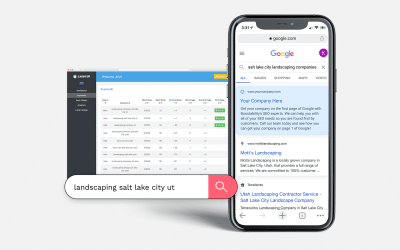Planning for how you’re going to reopen your business after the COVID 19 shutdown is complicated. While you focus on getting business back to your “new” normal, you’re also having to consider what you’ll need to do to communicate with employees, customers and the community so that they feel comfortable returning to your place of business. With most of us eager to know facts, plans and timelines, the more you can strategize now, the quicker and more effective you’ll be at re-opening with confidence, and strong informational marketing communication can play a major role in accomplishing these goals.
Pivoting Marketing Communication and Content Strategies
Communicating with your target audience during the COVID 19 pandemic will vary based on your business type and customer base. How you previously interacted with your customers, employees and prospects, will determine the changes you need to make now. For example, retailers are have turned to ecommerce and curb-side pickup; B2B companies with outside sales are bringing them inside and introducing more teleconferencing, new integrated CRMs and live chat to connect and engage. I think we can agree that all businesses are affected in one way or another.
The key to long term success is how you pivot your marketing communication strategy now, both internally and externally. Think informing, educating and helping – adding value to the lives of your audience – not selling. Although there are many digital channels you can leverage to reach clients and prospects during this time, be sure to use your resources for building loyalty through appreciation and empathy during this time of uncertainty. According to HubSpot Research, 55% of people no longer trust the companies they buy from as much as they used to, and 71% do not trust sponsored ads on social networks. So this is a unique time for you to recover some of that lost trust and strengthen your long-term relationships between you and your customers. The combination of content creation via blogs and website content, social media, and email communication can all play an important role in making the most of this valuable opportunity .
Look at HubSpot, a marketing, sales, and service software provider. They have taken being helpful to a new level, transitioning what appears to be their entire social media strategy over to communicating helpful content and connecting with their audience with sometimes empathetic, sometimes uplifting engagements. Download their offer, A Content Marketing Playbook for Times of Crisis, to get more information on effective communication strategies as you get back to your new norm.
Google Also Appreciates Your Helpful Content
Helpful, educational content, relevant to your industry and related to the current pandemic is popular as people seek out information via online sources. If you choose to create this type of content in your blog or website Google will reward you as they are prioritizing the timely nature of this information in their search results. So not only will you be helping people become informed about the changes taking place in your business, you’ll be raising awareness of your brand and gaining new organic traffic to your site that otherwise could be difficult to achieve.
Pushing Out Content via Email During Crisis
To leverage your new content in other ways, you can push out relevant information via email and social media. For those companies with an email marketing database, , email is a great way to reach out with relevant information about your plans for now and as you re-open. But note, marketers should reserve their email communications for important and relevant content updates during a crisis as email is the most personal way to connect. When practiced appropriately, using email notifications to connect with your audience will not only help keep them informed, but also build a sense of trust and loyalty in the coming days and months.
When considering which content is appropriate to push out via email and which is not, a general rule of thumb is to avoid promotional language all together and instead lead with empathy and relevancy. Speak to how you’re adjusting to meet the new needs of your audience and how you’ll be securing customer and employee safety when the time comes to interact again, etc. With people impacted by the crisis in different ways, whether it’s emotional or financial, you’ll want to relate the value you can offer at this time, ways you can help, and how your products or services are relevant to their very specific needs at this time.
And remember, just because you can send an email, doesn’t mean you necessarily should unless it’s distributed delicately and at a considerate cadence and provides information that you know your recipients want.
Examples of Pivoting Marketing Content & Communication Strategies
- Our client that provides industrial automation for manufacturing is focused on communicating the availability of remote factory access to keep plants operating seamlessly as employee schedules are impacted; they’re not trying to sell new onsite PLC services.
- Our medical practice clients are communicating their new telehealth services and educating patients about new protocols designed to keep everyone healthier and safer; they’re not marketing their elective procedures.
- For our smart home automation client, he’s publishing content relative to homeowner pain points, such as Wi-Fi challenges resulting from both kids and parents working from home, and promoting live streaming of church services; he’s not pitching smart home theaters and smart lighting control.
- As a web design and inbound marketing company, we’re writing about ways to help businesses reposition their digital communication during this time; we’re not trying to sell website design and development services.
Communication on Social Media
With individuals and some organizations as a whole now working remotely, more of our daily lives have shifted to online, making social media more accessible during the day and a more important tool to stay connected. As if it wasn’t difficult enough to stay on top of social media trends and behaviors before COVID-19, now marketers need to re-evaluate their social media strategy given how the pandemic has influenced the best times to post, the volume of messages and how people engage with brands. With all the changes taking place in the world, you would be making a mistake to stay the course with your regular social media strategy, content and cadence.
Spout Social’s research on how COVID-19 has changed social media provides a guideline on what you can expect.
But just as with email, marketers need to approach social media content with well-thought out tone and context, in addition to frequency. Pandemic or no pandemic, you should always post with purpose.
During a time where people need information, you want to avoid overloading your audience when there’s already so much information out there to process. The other concept to consider is that with people working remotely, your employees and colleagues included, there is a certain lack of humanity from our daily lives that existed pre-pandemic. To introduce more connectivity to your social activity, try leveraging more video, quizzes, polls, shoppable posts, employee accolades and company culture content. And don’t forget tasteful and relevant humor at this time – provided its not offensive in any way. Your followers are starved for a much needed break from doom and gloom. The more you can encourage interactivity, and the more you can showcase real people, the better job you’ll do at contributing a dose of humanity during a time of social distancing and social-isolation.
And finally, please make sure the visuals accompanying your social posts are in context. While you may have a stockpile of brand imagery, ask yourself before posting if it is still relevant given our current state of social distancing, remote working, etc. For example, if talking about partnerships, it’s likely not the best choice to use imagery of people shaking hands or high fiving. A better choice instead would be imagery of people using handshake alternatives. You simply want to be sensitive to the current state of the world and avoid looking inappropriate despite your intentions.
If you need help finding the right words and most effective digital channels to communicate to your customers, employees and prospects during this time, we can help. Contact Us to discuss your needs.





